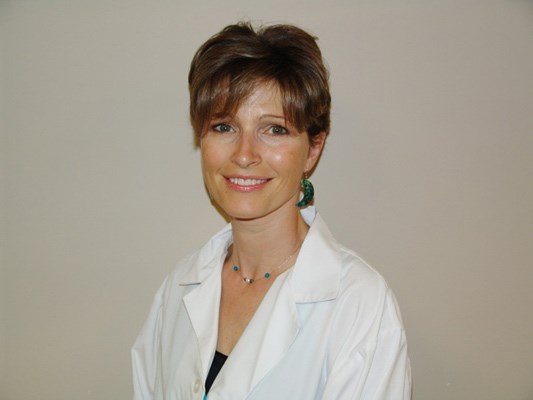Hannah Hatlen was a beautiful bright-eyed four-year-old with a hearty belly laugh.
She loved to dance, skate and enjoyed dressing up like a princess.
On Oct. 18, 2005, after a skating lesson, little Hannah complained to her mother, Kathie Hatlen, of a headache.
The family, former longtime Richmondites, would soon learn their precious Hannah had two brain tumours. One was removed, but then the devastating news came that the second was a diffuse intrinsic pontine glioma (DIPG). This rare tumour embeds itself in the brain stem and grows tangled in the brain stem's tissue, making it too dangerous for doctors to remove.
Hannah died on Oct. 31, 2006.
She was five.
A year later, overcome with grief, but not wanting other parents to go through similar heartache, Hannah's parents, Kathie and Tore Hatlen, established the Hannah's Heroes Foundation.
Its purpose is to raise awareness of the lack of research into pediatric brain cancer and to raise much-needed funds for research into treating this horrific disease.
In its first year, the small grassroots foundation, mostly manned by volunteer family members, raised $35,000. The committed group of volunteers sells Christmas cards and hosts an annual golf tournament and dinner as well as a 10-K race.
To date, Hannah's Heroes has raised more than $160,000 with money funding two fellowships at the Child and Family Research Institute at BC Childrens, as well as lab equipment.
"Every single penny goes to the foundation. There is no overhead or administrative costs," said Cheryl Hamilton, Kathie Hatlen's sister and vice president of the foundation.
Dr. Sandra Dunn, a molecular biologist and senior scientist with the Child & Family Research Institute at BC Children's, has been focusing her research on pediatric cancers.
"Hannah's type of cancer, DIPG, is extremely rare thank goodness," said Dunn. "It's also almost incurable - it goes to the brain stem so it's hard to surgically remove it."
On a positive note, Dunn said they are making progress. "One of the ways that they are doing this is to understand the genes that make up the tumours. This work is being done in collaboration with Dr. Cynthia Hawkins, a leader in the field of DIPG research who is located at The SickKids Hospital in Toronto.
"It is through national and international collaborations such as this that they are making important advances in the understanding and treatment of DIPG."
Research being conducted at BC Children's Hospital aims to understand how DIPG are unique and from that information customizes treatment strategies. She went on to explain that essentially DIPG is an inherited genetic disease, which seems to hit children between the ages of six and nine.
"Hannah's uncle, Kathie's brother, died of DIPG at the age of nine," added Dunn.
Dunn said that critically important to continued research is the fundraising efforts of nonprofit organizations such as Hannah's Heroes. Federal and even provincial grants are woefully inadequate, and that's if a scientist even gets approval, according to Dunn.
"It can take three months to prepare a grant application, then if you are even approved, which is rare, it can take another 18 months to receive the funding."
Recently, Dunn approached Hannah's Heroes for funding for a critical piece of lab equipment needed for the research. With the generosity of the foundation and the public, her team was able to purchase the equipment.
"There is no mechanism in place to replace equipment," she said. "We rely on the public and nonprofits."
As a mother herself, Dunn said watching the progress into DIPG is bittersweet - as it happened too late to save Hannah. An article about Hannah's Heroes by Vancouver Sun's Pete McMartin has furthered the cause.
"After the article ran in the Vancouver Sun (Jan. 29, 2012), Sang Mah, who is in charge of fellowships at UBC, called me to say she will match the dollars raised to fund two fellowships," Dunn said. "She worked night and day, and on her weekends, to help me with the applications - this is huge."
Sadly, Hannah's mother will never see the great strides that have happened in the last few years because of Hannah's Heroes. Kathie Hatlen inherited the genetic predisposition to cancer and in the same year as the foundation was created, she discovered she had both breast cancer and leukemia. She died on Oct. 21, 2008, almost two years after Hannah did. She was 40.
"Kathie laid the groundwork for the foundation and we are working on a better ending," said Hamilton, who added it's such a tragic story for Kathie's husband Tore and their surviving daughter Allie, seven.
Hamilton is determined to see "my sister's dream of finding a cure or treatment for DIPG become a reality."
The third annual Merrywishers Golf Tournament and Banquet happens Thursday, May 31 from noon to 8 p.m. at Mayfair Lakes Golf and Country Club, 5460 No. 7 Road. Tickets are $160 and include a round of golf, prizes, dinner and silent auction.
"We are still looking for sponsorships for our golf tournament," added Hamilton.
Hannah's Heroes hosts a number of fundraisers. To find out more, visit www.hannahsheroes.com. If you cannot attend, you can donate to Hannah's Heroes online or at 1399 Railspur Alley, Vancouver, V6H 4G9.
BRAIN TUMOUR STATISTICS
- Brain stem tumours, also called brainstem gliomas account for about 10 to 15 per cent of childhood brain tumours.
- Typically exhibits rapid clinical onset and progression with 90 per cent mortality rate within 18 months from the time of diagnosis.
- There are 3,000 children diagnosed with brain tumours annually. Brainstem gliomas (BSGs) affect 200 to 300 children in the United States each year, and are the leading cause of brain tumour death in children.
- BSGs are classified into four categories on the basis of anatomic location and radiographic appearance: diffuse, focal intrinsic, focal exophytic, and cervicomedullary.



